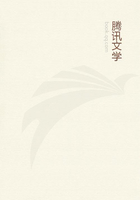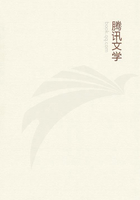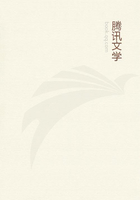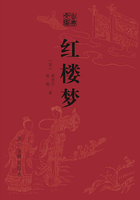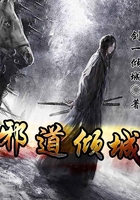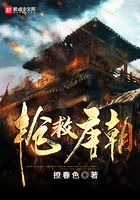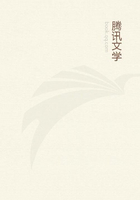The name of Peru was not known to the natives. It was given by the Spaniards, and originated, it is said, in a misapprehension of the Indian name of "river."1 However this may be, it is certain that the natives had no other epithet by which to designate the large collection of tribes and nations who were assembled under the sceptre of the Incas, than that of Tavantinsuyu, or "four quarters of the world."2 This will not surprise a citizen of the United States, who has no other name by which to class himself among nations than what is borrowed from a quarter of the globe.3 The kingdom, conformably to its name, was divided into four parts, distinguished each by a separate title, and to each of which ran one of the four great roads that diverged from Cuzco, the capital or navel of the Peruvian monarchy. The city was in like manner divided into four quarters; and the various races, which gathered there from the distant parts of the empire, lived each in the quarter nearest to its respective province. They all continued to wear their peculiar national costume, so that it was easy to determine their origin; and the same order and system of arrangement prevailed in the motley population of the capital, as in the great provinces of the empire. The capital, in fact, was a miniature image of the empire.4The four great provinces were each placed under a viceroy or governor, who ruled over them with the assistance of one or more councils for the different departments. These viceroys resided, some portion of their time, at least, in the capital, where they constituted a sort of council of state to the Inca.5 The nation at large was distributed into decades, or small bodies of ten; and every tenth man, or head of a decade, had supervision of the rest,---being required to see that they enjoyed the rights and immunities to which they were entitled, to solicit aid in their behalf from government, when necessary, and to bring offenders to justice. To this last they were stimulated by a law that imposed on them, in case of neglect, the same penalty that would have been incurred by the guilty party. With this law hanging over his head, the magistrate of Peru, we may well believe, did not often go to sleep on his post.6The people were still further divided into bodies of fifty, one hundred, five hundred, and a thousand, with each an officer having general supervision over those beneath, and the higher ones possessing, to a certain extent, authority in matters of police. Lastly, the whole empire was distributed into sections or departments of ten thousand inhabitants, with a governor over each, from the Inca nobility, who had control over the curacas and other territorial officers in the district. There were, also, regular tribunals of justice, consisting of magistrates in each of the towns or small communities, with jurisdiction over petty offences, while those of a graver character were carried before superior judges, usually the governors or rulers of the districts. These judges all held their authority and received their support from the Crown, by which they were appointed and removed at pleasure. They were obliged to determine every suit in five days from the time it was brought before them; and there was no appeal from one tribunal to another. Yet there were important provisions for the security of justice. A committee of visitors patrolled the kingdom at certain times to investigate the character and conduct of the magistrates; and any neglect or violation of duty was punished in the most exemplary manner. The inferior courts were also required to make monthly returns of their proceedings to the higher ones, and these made reports in like manner to the viceroys; so that the monarch, seated in the centre of his dominions, could look abroad, as it were, to the most distant extremities, and review and rectify any abuses in the administration of the law.7The laws were few and exceedingly severe. They related almost wholly to criminal matters. Few other laws were needed by a people who had no money, little trade, and hardly any thing that could be called fixed property. The crimes of theft, adultery, and murder were all capital;though it was wisely provided that some extenuating circumstances might be allowed to mitigate the punishment.8 Blasphemy against the Sun, and malediction of the Inca,--offences, indeed, of the same complexion were also punished with death. Removing landmarks, turning the water away from a neighbor's land into one's own, burning a house, were all severely punished. To burn a bridge was death. The inca allowed no obstacle to those facilities of communication so essential to the maintenance of public order. A rebellious city or province was laid waste, and its inhabitants exterminated. Rebellion against the "Child of the Sun," was the greatest of all crimes.9The simplicity and severity of the Peruvian code may be thought to infer a state of society but little advanced; which had few of those complex interests and relations that grow up in a civilized community, and which had not proceeded far enough in the science of legislation to economize human suffering by proportioning penalties to crimes. But the Peruvian institutions must be regarded from a different point of view from that in which we study those of other nations. The laws emanated from the sovereign, and that sovereign held a divine commission, and was possessed of a divine nature. To violate the law was not only to insult the majesty of the throne, but it was sacrilege. The slightest offence, viewed in this light, merited death; and the gravest could incur no heavier penalty.10 Yet, in the infliction of their punishments, they showed no unnecessary cruelty; and the sufferings of the victim were not prolonged by the ingenious torments so frequent among barbarous nations.11These legislative provisions may strike us as very defective, even as compared with those of the semi-civilized races of Anahuac, where a gradation of courts, moreover, with the fight of appeal, afforded a tolerable security for justice. But in a country like Peru, where few but criminal causes were known, the right of appeal was of less consequence.
同类推荐
热门推荐
红楼梦(古典文库)
本书以程乙本为底本,而校以各脂砚斋本及各程本。参校较多的是脂砚斋己卯本、庚辰本、甲戌本和《乾隆抄本百廿回红楼梦稿》、《列宁格勒藏抄本石头记》及程甲本、王雪香评本。个别本子未曾寓目,利用了俞平伯《红楼梦八十回校本》及文化艺术出版社出版的《脂砚斋重评石头记汇校》。诡谲屋的秘密
著名的旅游胜地戴宗山风景区迎来了十六个青年男女和两位老人共计十八位旅游者,这些本来高高兴兴的普通人,因为各种各样的原因,都没有入住山脚下美丽舒适的度假村,而是来到了距离半山腰不远处的偏僻休息区落脚。正当他们决定好好玩一玩的时候,突然增强的暴雪封死了下山的路,不得已之下,十八个人只能选择入住坐落在诡谲崖上的度假别墅作为临时落脚点,等待除雪车前来救援。整整三天四夜的时间,入住诡谲别墅的十八个人中九个人相继遇害,诡异事件接连不断发生,令所有人陷入恐慌和猜疑之中,最终剩下的九个人是否可以脱离死亡诅咒,成功回到原来的生活之中呢?让我们在《诡谲屋的秘密》中一起来寻找最后的答案吧。追妻无门:女boss不好惹
青涩蜕变,如今她是能独当一面的女boss,爱了冷泽聿七年,也同样花了七年时间去忘记他。以为是陌路,他突然向他表白,扬言要娶她,她只当他是脑子抽风,他的殷勤她也全都无视。他帮她查她父母的死因,赶走身边情敌,解释当初拒绝她的告别,和故意对她冷漠都是无奈之举。突然爆出她父母的死居然和冷家有丝毫联系,还莫名跳出个公爵未婚夫,扬言要与她履行婚约。峰回路转,破镜还能重圆吗? PS:我又开新文了,每逢假期必书荒,新文《有你的世界遇到爱》,喜欢我的文的朋友可以来看看,这是重生类现言,对这个题材感兴趣的一定要收藏起来。追妻无门:女boss不好惹
青涩蜕变,如今她是能独当一面的女boss,爱了冷泽聿七年,也同样花了七年时间去忘记他。以为是陌路,他突然向他表白,扬言要娶她,她只当他是脑子抽风,他的殷勤她也全都无视。他帮她查她父母的死因,赶走身边情敌,解释当初拒绝她的告别,和故意对她冷漠都是无奈之举。突然爆出她父母的死居然和冷家有丝毫联系,还莫名跳出个公爵未婚夫,扬言要与她履行婚约。峰回路转,破镜还能重圆吗? PS:我又开新文了,每逢假期必书荒,新文《有你的世界遇到爱》,喜欢我的文的朋友可以来看看,这是重生类现言,对这个题材感兴趣的一定要收藏起来。

